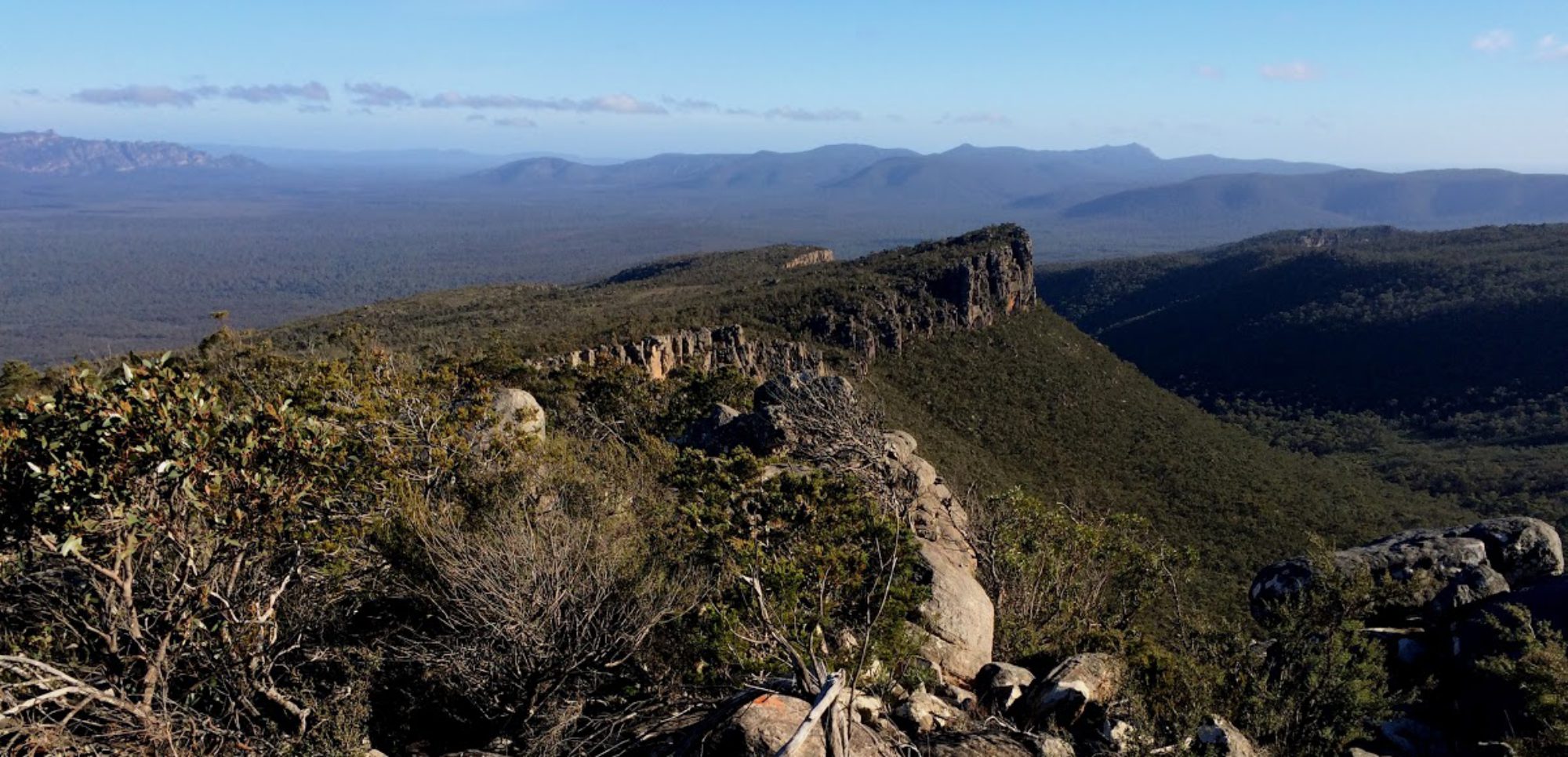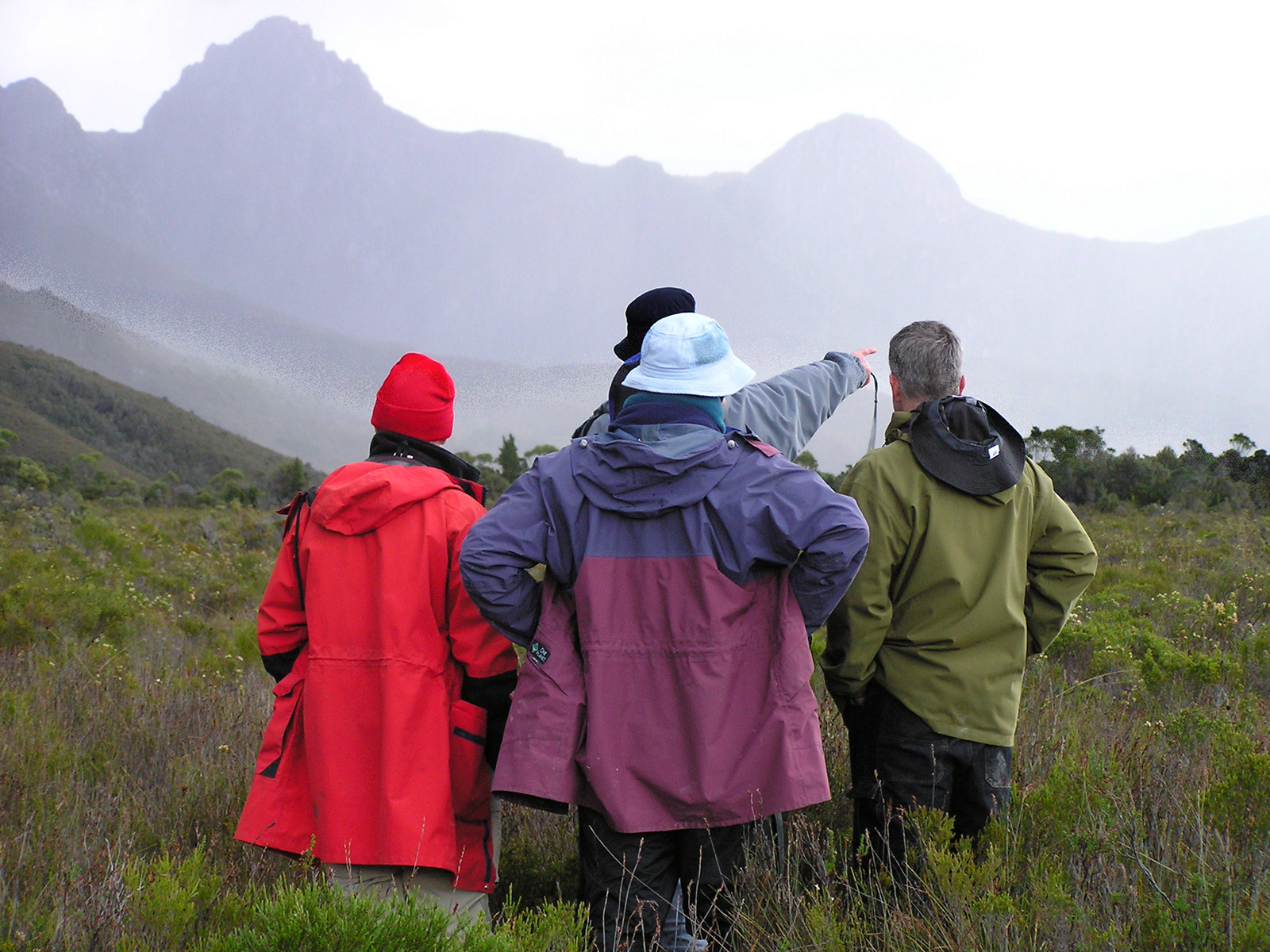Reading Time: 4 minutes
Clothing worn for bushwalking should:
- be comfortable to move around in for extended periods.
- be easily adjustable to maintain comfort in varying weather conditions.
- provide protection from the scrub and sun, wind, rain and snow.
- be made of quality materials that are strong enough to resist the added wear and tear of the outdoors.
Layering for comfort
The main layers are:
- Outer waterproof layer – jacket and overpants
- Mid-layer – shirt, trousers, warm fleece
- Base layer – thin thermal garment of fine wool or technical synthetic fabric worn next to the skin.
Layering clothing provides the following advantages:
- Multiple thin layers trap air to provide efficient insulation and are more effective for keeping warm than using a single, thick layer that can’t be adjusted for varying conditions.
- Can help avoid sweating that dampens clothing reducing effective insulating properties by taking layers off when required.
Materials
- Synthetic clothing tends to be lighter in weight, is often more robust, has good insulating properties and usually dries quickly.
- Cotton, when damp from perspiration or rain is a very poor insulator. It is not recommended for the outdoors.
- Wool retains its very good insulating properties when wet.
Outer layer – protection from the elements
A waterproof jacket is essential on every trip for both comfort and safety.
- Day walks: Lighter fabrics, while thinner and less durable, are good for day walks.
- Overnight bushwalking: a waterproof, windproof, breathable fabric (e.g. Gore-Tex, eVent, Hydronaute or similar) wicks sweat vapour away and reduces condensation. However, they are expensive.
- Multi-day trips in more extreme environments: Heavier, more durable fabrics offer better protection and are best for multi-day trips in wet or alpine environments.
Ponchos are used by some in tropical areas but aren’t useful in wind and easily catch on scrub.
Cheap plastic or nylon coats are unsuitable as they do not breathe and are easily damaged.
Waterproof jacket features
- Longer bushwalking jackets cover upper legs and can be sat on while worn.
- Shorter, alpine-style jackets are used for ski touring as they allow greater movement but provide less protection for the thighs.
- Jackets should be loose fitting to accommodate additional layers of warm clothing underneath.
- Ventilation options between different models. Some have underarm zips (pit zips).
- Storm hood is essential with space to comfortably fit a warm beanie or balaclava. Some have a stiff brim to provide additional protection. Foldaway hoods are less effective.
- Seam sealing improves waterproofing.
- Adjustments: Wrist closures, waist and bottom cords can adjust the fit of the jacket.
- Pockets: Vary between models. Options include hand warmer, mobile phone, small external chest pocket, an internal map pocket.
Regular washing according to the manufacturer’s instructions helps maintain water repellency and breathability.
Waterproof overpants
- Provide protection for legs in strong wind, rain or snow and can provide additional warmth.
- Waterproof, breathable, durable fabric is best.
- Need to be loose fitting to allow movement and accommodate additional layers underneath.
- Zips to mid-calf help put them on without removing boots.
- Full-length zips that are detachable at the waist enable them to be put on without removing boots, snowshoes but are more expensive.
Mid layer – comfortable and versatile
The mid layer is used to regulate warmth and comfort.
Tops
- Shirts made of light synthetic material wick moisture and are quick drying. Long sleeves and collars provide sun and scrub protection.
- Active wear made of light synthetic material wicks moisture and is quick drying. Long sleeves provide sun protection.
- Fleece tops are lightweight, retain warmth and dry quickly if wet. Many are not windproof. Care is needed near fires and stoves as the fabric is flammable.
- Wool jumpers provide good insulation, but are heavier than a synthetic equivalent and when wet.
- Down jackets and vests. Light, compact and very warm, good for winter or ski touring trips, but provide no insulation if they get wet.
- WindStopper jackets are fleece with a windproof layer.
- Softshell jackets are water and wind resistant but may be less breathable. They are not waterproof and are heavy and bulky.
Pants and shorts
- Pants or shorts must be comfortable for walking.
- Shorts are preferred by many for walking as they are cooler in hot conditions. However, they provide less protection for the legs from sunburn and scrub.
- Pockets vary between models. Some with zips are useful for securely storing items.
- Fleece pants are used by some for added warmth in the evenings.
- Ski touring trousers – synthetic stretch fabric is often used for specialist ski pants as snow does not stick and they dry quickly.
Denim jeans are not suitable. They restrict leg movement, are hot in warm weather and can be deadly when wet due to the ‘wicking’ effect that greatly increases heat loss that can lead to hypothermia.
Base layer and underwear
- Thermal tops and pants are worn as a layer underneath shirts and/or pants in cooler weather. A spare set can be kept for use at night and to sleep in.
- Synthetic and merino wool materials are popular and effective for base layers.
- Underwear must be comfortable. Cotton underwear gets wet with heavy sweating which can lead to chafing. Wool or synthetic fabric remains relatively dry even and can provide better warmth and comfort.
Warm headwear
Warm headwear is essential in cold weather to prevent significant heat loss from the head.
- Beanies should cover the ears.
- Balaclavas keep the head and neck warmer
- Polar fleece neck gaiters or buffs can also be worn on the head.
- Silk or microfibre balaclavas, buffs and neck gaiters add a layer of insulation with little weight or bulk. Several can easily be carried.
- Fleece, wool and silk stay warm when wet.
Gloves and mittens
Gloves or mittens are an essential item for cooler weather. Gloves or mittens should match the expected conditions on a trip.
- Gardening or work gloves are useful for scrub-bashing and provide sun protection.
- Thermal gloves can be good for walking in cool conditions and during cooking.
- Fleece or lined softshell gloves are good for cold conditions.
- Combination fingerless gloves or mittens can provide additional dexterity.
- Alpine gloves provide maximum warmth for very cold conditions and should be waterproof.
- Inner gloves (silk or synthetic) can provide additional warmth in very cold conditions.
Carry a spare pair of gloves in winter or when ski touring to keep hands dry and warm. A pair or rubber gloves are useful for snow shelter construction.
Sun protection
- A squashable sun hat with a large brim to protect the face and neck with a chin cord for windy conditions is essential. The large brim is also useful for keeping rain off the face and glasses.
- A cap provides the face with some sun protection, but not the ears and neck.
- Some outdoor caps include a detachable flap cover for the ears and neck.

